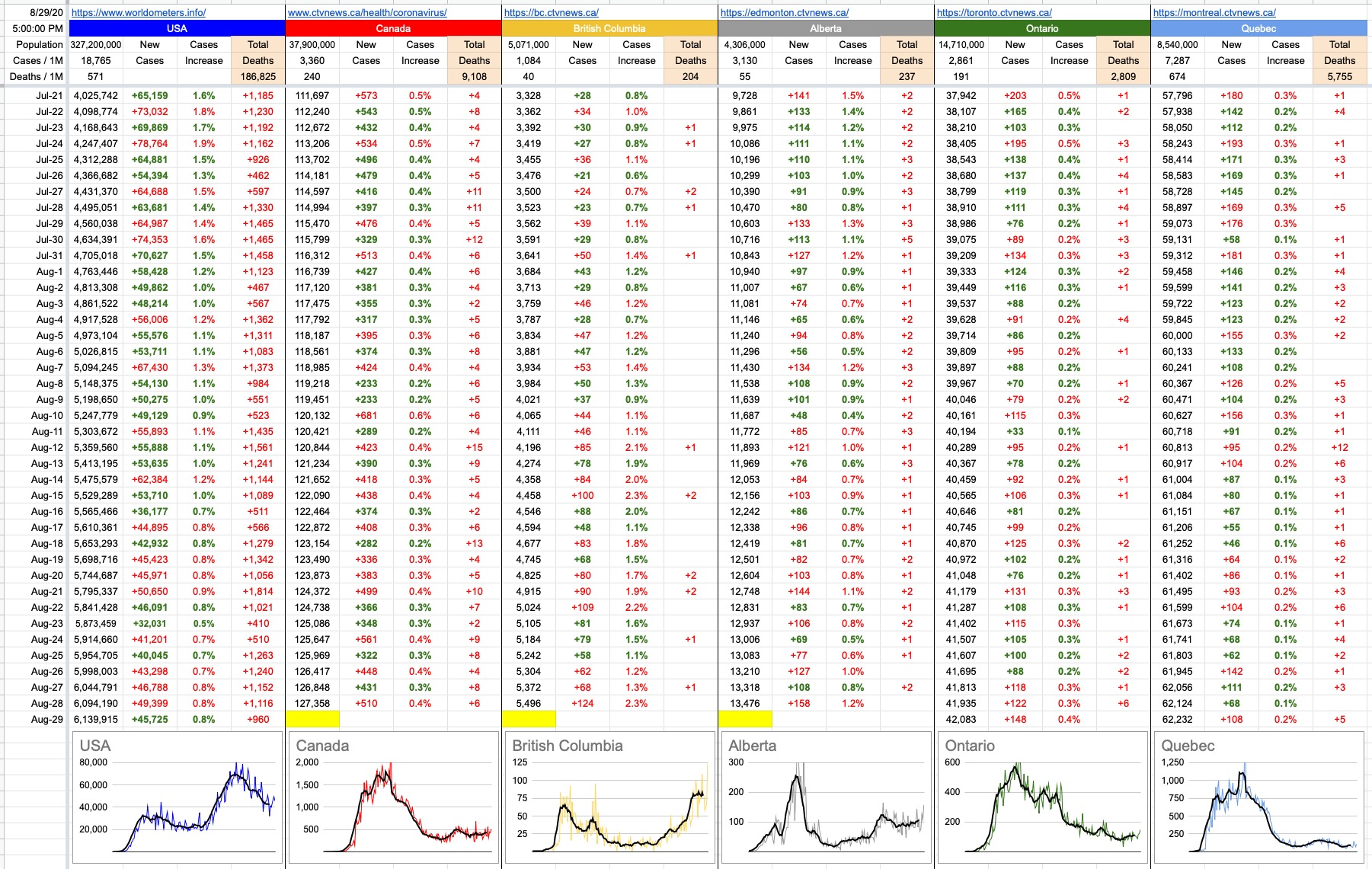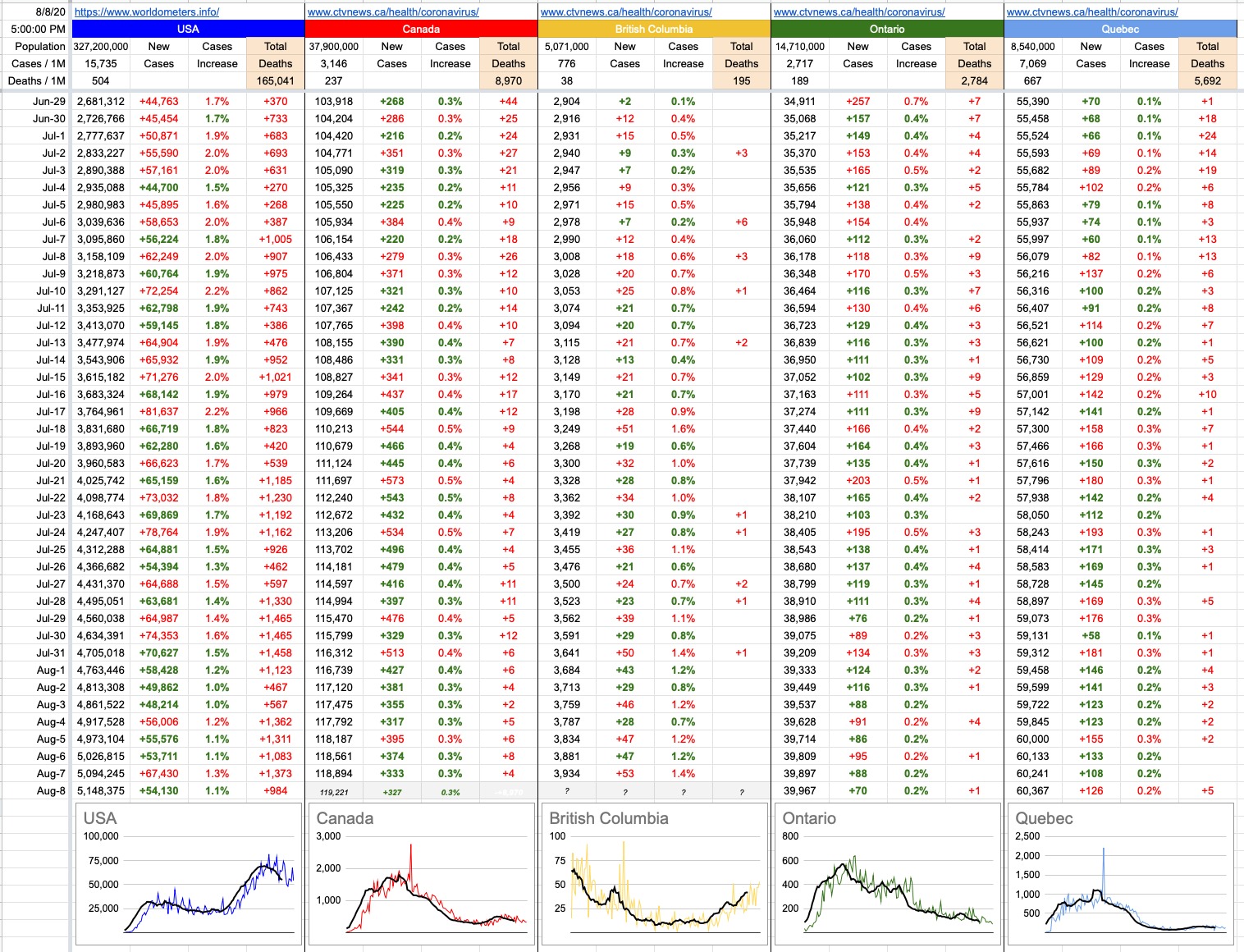Looking around the world for some good, optimistic news… we could all use a bit of that… I came across both France and Italy, both showing steadily declining numbers… and entering re-opening phases… a very welcome progression for those two places that were hit very hard.
One of the well-known symptoms of COVID-19 is how it affects the sense of taste and smell.. and that reminded me of amusing thought… due to an observation I had when I was in Paris in 1996. My girlfriend at the time was studying a year abroad at The Sorbonne, and I’d gone over to visit her for a couple of weeks. We didn’t have a lot of money to spare as we were saving money to go to Italy the following week, so we spent most days just wandering the streets of Paris, from park to park, coffee shop to coffee shop. And what struck me were two things; everybody smoked, and nobody picked up after their dogs. The streets were littered with cigarette butts and dogshit, and it occurred to me that the two things were connected. Most people didn’t realize now badly their city smelled, because all they could sense on a continual basis was cigarette smoke. Actively, stale or second-hand — you couldn’t get away from it.
And all of that reminds me of a funny story…
She lived in a tiny apartment above a coffee shop that she frequented, and on my first morning there, we went down to grab a coffee.
“Un latée, si vous plait”, I said to the shopkeeper/barista/older French guy.
“Monsiour, there is no such thing as a ‘latée’ — what you want is a café-au-lait. You Americans… you butcher our language.”
Whoah dude, what… jeez.
Typically, in that situation, the first thing I do is clarify the very relevant, important and proud point that I am Canadian, not American. But in that very WTF moment, what I said was… and I should point out, I don’t speak German… but having visited Berlin a few years earlier, I still remembered a few key words… and so what I found myself saying was,
“You know… if it weren’t for us Americans, I wouldn’t be asking for a latée… or a café-au-lait… I’d be asking for Ein Heisse Milch Kaffe.”
As you might imagine, that was not well-received. The look of genuine surprise on his face though, the way his eyes got all wide… his own WTF expression… that was funny.
“Get out. Don’t come back”.
Hell yeah man, we’re outta here, and we’re not looking back.
So that’s how you get banned from a French coffee shop. The girlfriend wasn’t too pleased, having had her daily coffee hook-up destroyed (it wasn’t, she went right back to it after I left), but that whole episode brought to mind that old saying that France is wonderful, except for the people. I don’t really agree with that; we met some great people on that trip and I’ve been back there a few times since. Always a great experience. Arrogant jerks come in all shapes and sizes, and you’ll find them everywhere.
And we did make it to Italy, near the end of the trip… near the end of the relationship too, in fact… due to episodes like that one, but also this:
The idea was to get to Venice, but it was going to be shoestring all the way. Staying in Venice was out of the question, but we found a cheap hostel in Padova, about a 30-minute train ride away. Cool hostel by the way… the rooms were all molded plastic. The bathroom — sink/toilet/shower — was one tiny molded room, and after you used it, you’d push a button and the entire thing — every part of it, would be thoroughly cleaned; a whole cycle of soap/rinse/dry.
So in the morning, we headed to the train station to catch the train to Venice. I don’t remember how much the tickets were in Lira (this was before the Euro), but it was roughly $14 for a 1st-class ticket and $12 for a 2nd-class ticket, and we got into a huge argument. I wanted to pay the extra $2, and she argued we didn’t need to. Come on it’s only $4, yeah but it’s throwing money away, yeah but jeez, for the experience, who knows when we’ll be back here, as if we’re ever coming back here together, etc. Finally, I had to cave because — well, does that even need explaining. In any event, she spoke Italian so she went to deal with it… she bought us two 2nd-class tickets and she guided us to the platform and onto one of the train’s 2nd-class cars.
And, I have to be honest. It was really nice. Plush, comfortable seats. Not crowded. Quiet. Air conditioned. Wow, I thought… this is great. OK, I was wrong.
Halfway through the journey, the conductor shows up to take our tickets. We hand them over. He frowns. No no, he says… not 1st class. Huh? Oh crap… we’re sitting in 1st class. Oops. Sorry, we say… we will move right away. No no, he says, wagging his finger at us… you pay. Oh… yeah, ok, we will pay. Ironic, I think… all that fighting for nothing; here we are. I’m prepared to pay the “upgrade”, except now they’re both arguing and she’s getting upset and eventually explains to me that no, we can’t just upgrade the tickets… we’re being fined. She’s crying, I’m yelling, and he’s telling us police will be meeting us at the other end if we refuse to pay the fine, on the spot. The fine was $40 each, which took our entire budget for the day. I’d been trying to figure out how we were going to eat, catch a chamber-music concert at some church, and go for a gondola ride with the budget we’d had. The problem was solved… we did none of that… just wandered the streets (and bridges) of Venice till we could walk no more. At least there was less dogshit to contend with.
Yes… this has little to do with anything; blame it on Dr. Henry and her lack of releasing numbers on Sundays. I will correct the numbers tomorrow, as usual, and hopefully have something more relevant to convey… but it seems to be a “flat-or-better” sort of day.
But for now, that’s it; the weather looks good… maybe go outside and take your dog for a walk. And pick-up after it.












